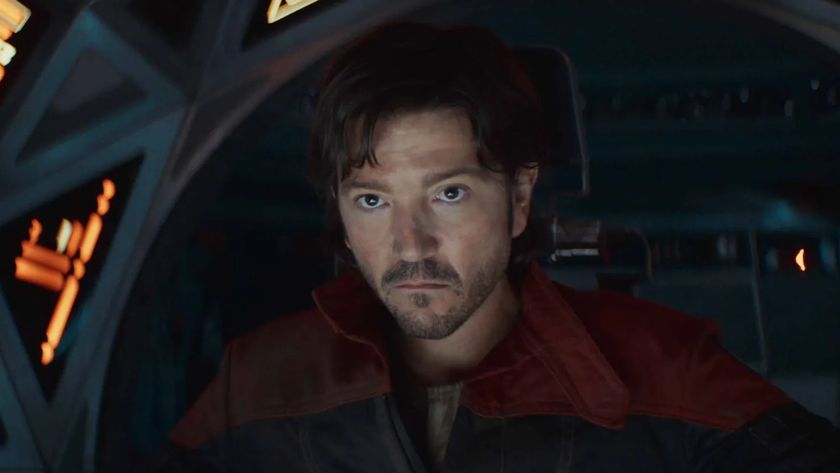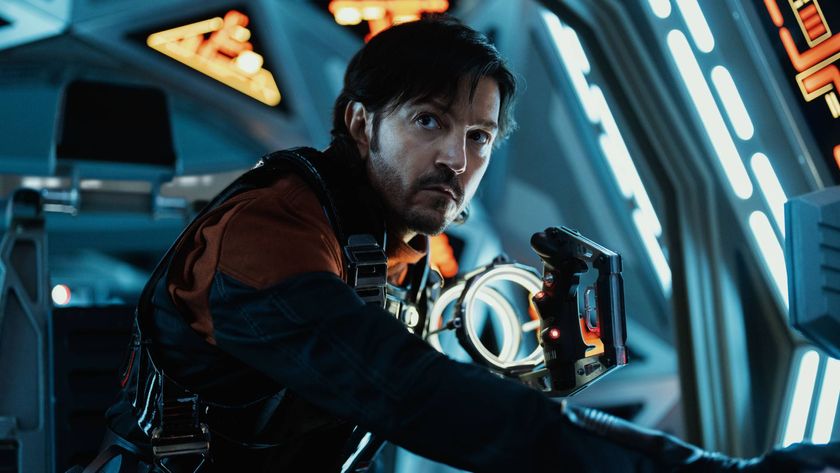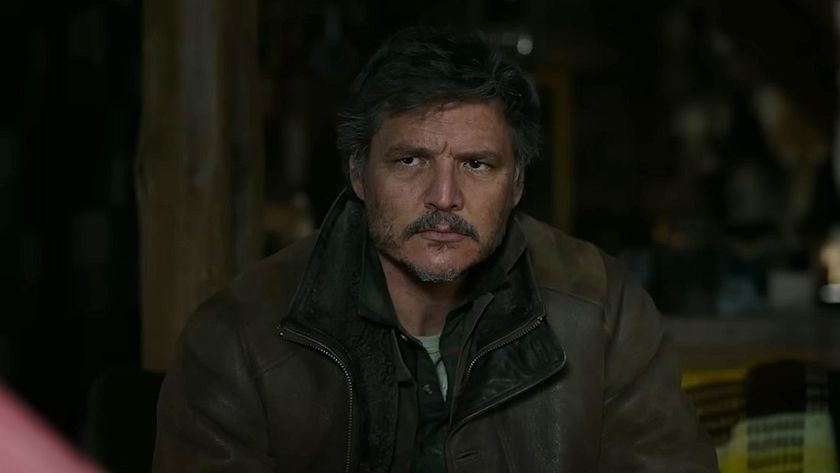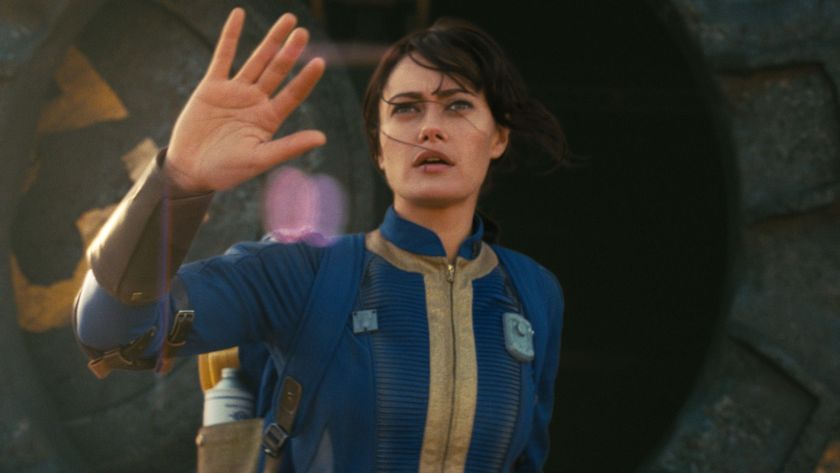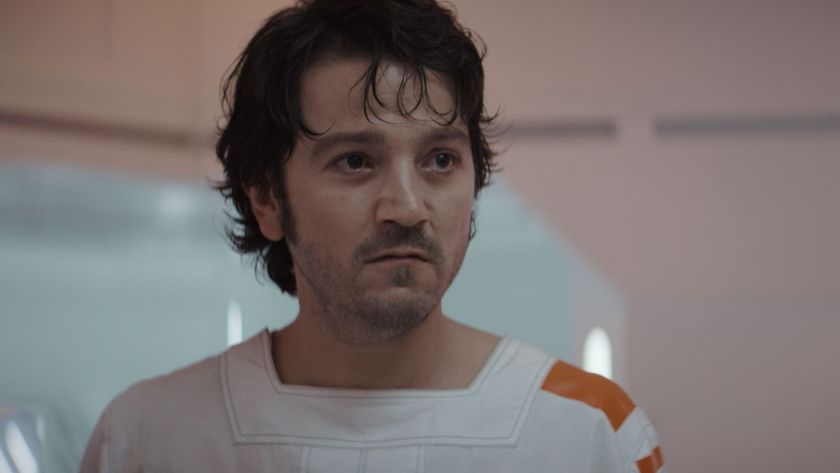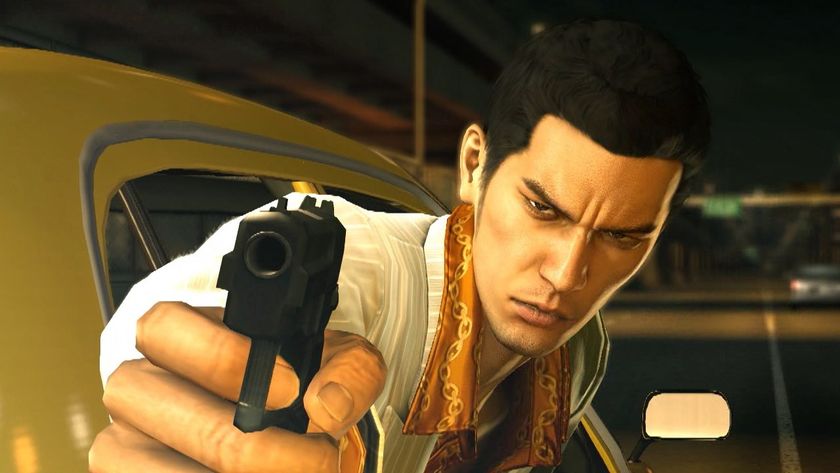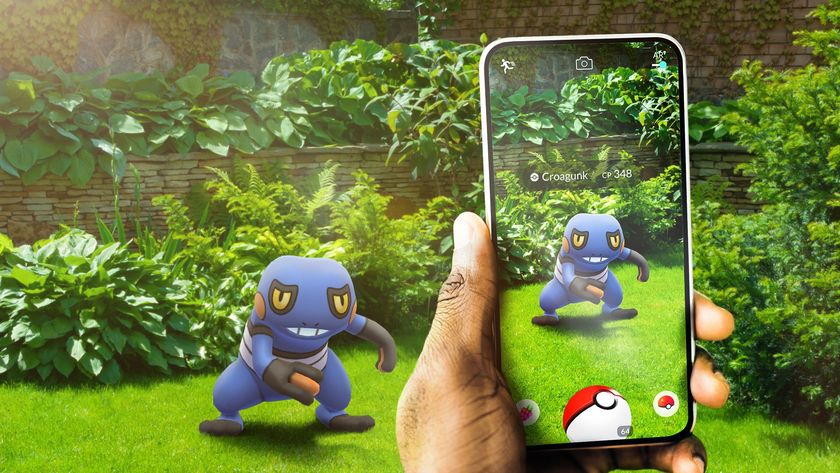16 Sci-Fi Sex Changes
None
From giant lizards to superheroes and androids, sci-fi and fantasy characters who swapped gender
1 Godzilla
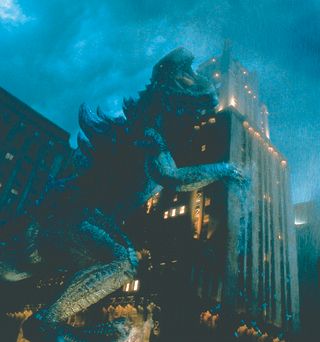
It was the revelation that Gareth ( Monsters ) Edwards was set to direct the new Hollywood Godzilla movie that inspired this feature. The news immediately evoked a discussion in the office about Roland Emmerich’s bizarre decision to turn the clearly testosterone-fuelled giant lizard of the Japanese film series into a doting, egg-laying mom for his US version. Not that we needed this proof to realise that Emmerich’s Godzilla was an impostor. It was clear from the first glimpse she was just an iguana with attitude. God may be a woman. Godzilla certainly is not.
.
.
2 Starbuck (and Boomer)

The new Battlestar Galactica was particularly gender-, colour- and species-blind when it came to recasting characters from the old show. Boomer went from being a black male human to an Asian-American female Cylon. The most high-profile sex change, though, was Starbuck’s – Dirk Benedict in the original show was replaced by Katee Sackhoff in the reimagined show, though she still puffed on the odd cigar. Benedict initially seemed happy with the idea; he posed and shared a cigar with Sackhoff for a publicity stunt held, of course, at a Starbuck’s. Later, though, he had a major change of heart, disdainfully referring to his successor as “Stardoe” and saying in an interview in May 2004: “‘Re-imagining’, they call it. ‘Un-imagining’ is more accurate… One thing is certain: in the new un-imagined, re-imagined world of Battlestar Galactica everything is female driven. The male characters, from Adama on down, are confused, weak, and wracked with indecision while the female characters are decisive, bold, angry as hell, puffing cigars (gasp) and not about to take it anymore.”
.
.
Sign up to the SFX Newsletter
Get sneak previews, exclusive competitions and details of special events each month!
3 Doctor Who
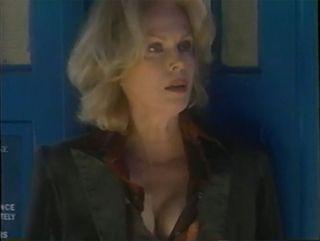
For just about every regeneration since Tom Baker’s, there have been rumours that the next Doctor would be a woman. What many forget is that it actually happened – sort of – when Hugh Grant regenerated into Joanna Lumley. Hang on, you might be thinking, what kind of a cockamamie parallel world have we stumbled onto here? Welcome to Planet Red Nose, where “The Curse Of Fatal Death” was a one-off comedy episode of Doctor Who produced for 1999’s Comic Relief fundraising exercise on the BBC. Written by Steven Moffat, it’s very funny (a rarity for these kind of events), and features a whole host of actors playing the part of the Time Lord, all of them potential Who material – Rowan Atkinson, Richard E Grant and Jim Broadbent as well as Hugh Grant and Lumley.
The Doctor seems quite delighted to regenerate into her first female self (“I’ve always wanted to get my hands on one of these”) and overjoyed at a new setting she finds on the Sonic Screwdriver (think about it). Her companion, Emma (Julia Sawalha), is less enthusiastic, as she was due to marry the Doctor: “I’m sorry, but you’re just not the man I fell in love with.” This leaves the way for a romance to blossom between the Doctor and his old enemy (played by Jonathan Pryce): “Tell me, why do they call you the Master?” “I’ll tell you later…” he says with a lascivious grin.
.
.
4 Starhawk
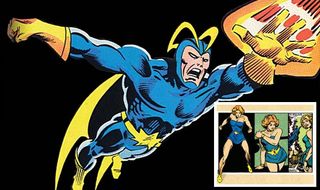
A member of Marvel’s superteam from the future, the Guardians Of The Galaxy, Starhawk (aka Stakar) was forced to live part of his life time-sharing a body with his adoptive sister Aleta Ogord – they took turns occupying the same physical space; while one was “here” the other was banished to some kind of limbo. Somehow this didn’t prevent them developing romantic feelings for each other, and when they were finally separated they had three kids together. It’s all just too weird, really, and if you missed the “origin” story it was near impossible to work out what was going on – it really did seem like Starhawk was just randomly changing sex.
.
.
5 Holly/Hilly
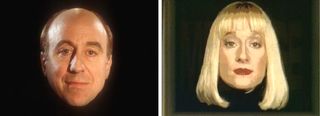
If there were ever a character less likely to undergo an unexpected, self-elected sex change it would have to be Red Dwarf ’s grumpy, sardonic, world-weary computer Holly. Yet that’s exactly what happened, in the digital equivalent of Jack Dee suddenly becoming Jacquie DeLite. Actually, it’s even weirder. Holly decided to have a “head sex change” after meeting and falling in love with his alternate female self, Hilly – he actually became her! In image at least. That’s like Jack Dee deciding to have a sex change and a facelift to look like his wife.
.
.
6 M
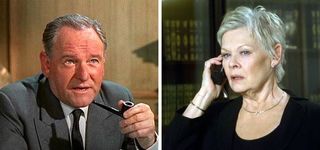
Bond’s boss was a man. Then he was a different man. Then he was a woman. Then again, Bond has been a Scotsman, a Welshman, an Englishman, an Aussie, an Irishman a shop window mannequin in a safari suit. So it seems likely Q, M and perhaps even Bond are mere code names, and different people can take up the mantle. Does that mean we could soon have a Jemima Bond? Or is that an even more heinous suggestion than a female Doctor Who ?
.
.
7 Orlando
Orlando was a character created by famous literary darling Virginia Woolf for her novel Orlando: A Biography . He was born in the 16th century as a male, and like Peter Pan decides not to grow old. He spends a century or so tromping around Europe hobnobbing with historical bigwigs and writing poetry (like an eternal teenager) before one day falling asleep, and waking up sometime later as a woman. After suffering a few teething problems, Lady Orlando soon decides that being female is actually a pretty good thing.
At which point, Alan Moore steps in and decides, “Blimey, you’d make a cracking character for The League Of Extraordinary Gentlemen .” And thus a great, witty, ingenious adventure comic about the likes Allan Quartermain, Captain Nemo and Jekyll & Hyde teaming up for a bit of derring do, suddenly becomes a cul de sac of high brow literary in-jokes for the kind of people who can think James Joyce is a little too trashy.
.
..
.
.
.
8 Rebis
Not to be confused with Inspector Rebis, Rebis was originally a character called Negative Man, who was part of the ’60s DC superteam Doom Patrol. Strictly speaking, Negative Man – or the Negative Spirit – was a separate being from his host, Larry Trainor, a test pilot who discovers he can release this “Negative Being” from his body after an incident involving, you guessed it, radioactivity. Anyway, to cut a long story short, Larry and Negative Man later part ways, but then, later still, the Negative Spirit returns and combines itself, Larry and a black doctor called Eleanor Poole into one hermaphroditic being who favours the kind of sunglasses only Bono would usually wear. So, it’s a kind of a sex change for two characters – male to hermaphrodite and female to hermaphrodite. Can anybody beat that?
.
.
.
.
.
..
./zlcmv
.
9 Dr Jekyll & Sister/Ms Hyde
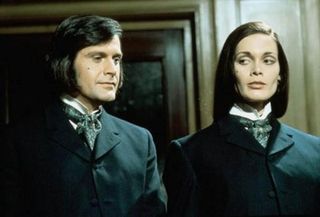
You really wouldn’t want to read a feminist critique of Hammer’s 1971 gender swap take on The Strange Case Of Dr Jekyll And Mr Hyde . Well, think about it – the good Dr Jekyll (Ralph Bates) becomes the evil Sister Hyde (Martine Beswick). It’s not exactly PC. is it? More AC/DC. But dodgy gender politics aside, it’s a typically affable piece of Hammer melodrama, and about a million times more watchable than 1995’s Dr Jekyll And Ms Hyde , a “comedy” starring Tim Daly and Sean Young where the real evil comes in the form of the insultingly lame script, and a message about, “To understand women, he had to become one.”
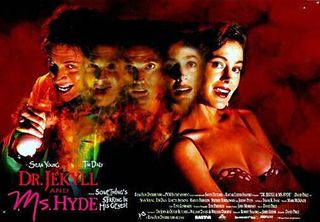
.
.
10 Dizzy
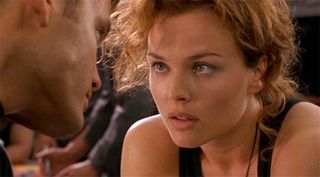
Straightforward one, this – Dizzy in Robert Heinlein’s book Starship Troopers is a male grunt. Dizzy in the film Starship Troopers is a female grunt. Why? Well, Paul Verhoeven couldn’t make a film without some sex, could he?
.
.
11 HG Wells
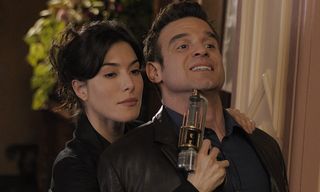
Yep, in the wacky world of Warehouse 13 HG Wells is a woman. An evil woman. Helena Wells. She never really changed sex. It's more a conceptual change. Y’see, she wrote all the books back in the 19th century, but had to pretend her brother really wrote them because it was man’s world. For a while she was an apprentice at Warehouse 12, but went off the rails after her daughter was killed, and became obsessed with finding a way to time travel so she could go back and save her. She never seems too worried about missing out on her book royalties, though.
.
.
12 Spot
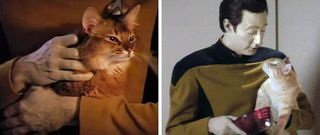
Data’s cat spot in Star Trek The Next Generation was originally a long-haired male moggy. Not that we examined him close enough to check, but Data certainly calls him “he”, and Data’s an android with a positronic brain, so we’ll trust him on that. But then, as the seasons went by, Spot morphed into a short-haired cat that eventually had kittens. We blame some kind of bizarre transporter accident or a fuzzy blue anomaly…
.
.
13 Bergu Kattse/Zoltar
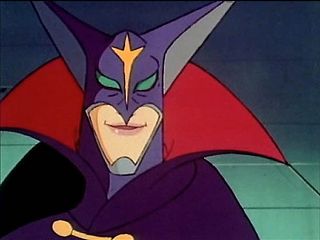
You may or may not know that ’80s cartoon classic Battle Of The Planets was originally a Japanese show called Science Ninja Team Gatchaman that was very freely adapted for US TV. There were a lot of differences between the shows. The Americans introduced a comedy robot called 7-Zark-7 for a start. They also significantly changed the nature of the show’s Big Bad, Zoltar, or Bergu Kattse as he/she/it was known in the original. Kattse was a chimeric mutant created by Sosai X by fusing two fraternal twins (one male, one female) into a single entity for the task of world domination. As a child Kattse would change from male to female on a yearly basis and had to spend years transferring between schools before gaining control of his body. Zoltar, on the other hand, was a camp bloke in a silly mask.
.
.
14 Dren
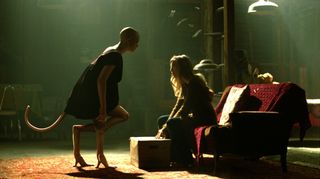
Some scientists are a bit thick. The modern-day Frankensteins in Splice , Clive Nicoli (Adrien Brody) and Elsa Kast (Sarah Polley) (horror fans will get the in-joke in the names) create some artificial slug-like creatures. Unfortunately, they unexpectedly and spontaneously change sex during an ill-timed press conference, and, being male now, they decide to maul each other to bloody pulps. Clive and Elsa then create the far cuter Dren using similar methods, but only cotton on to the fact that she’s due to turn into a psychotic male when it’s a tad too late.
.
.
15 Jurassic Park
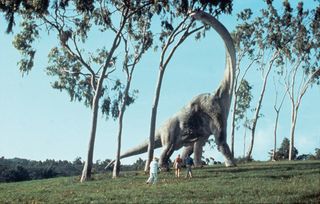
Nature finds a way. So while scientist John Hammond tried to maintain control over the dinosaurs in his prehistoric theme park by making sure they were all female (so that they couldn’t breed) nature had other ideas. What that silly old duffer Hammond forgot was that he had used frog DNA to help recreate his dinosaurs, and some frogs are known to spontaneously change sex. D’oh! Next thing you know, the big blighters are breeding and getting very aggressive. Men, eh?
.
.
16 Goybirl/Birlgoy/It-Star
It-Star was actually an android, so it’s debateable if he/she ever actually changed sex. He was a “baby” android constructed by Cy-Star, sister of Zelda, the big bad in Gerry Anderson’s ’80s series Terrahawks . Cy-Star was never sure if she wanted a boy or a girl, so she went for a bizarre compromise. At times it would would have a male personality, all scheming and evil and speaking in a masculine German accent; at other times it would be all innocent and delicate, speaking in a little girl’s voice. No gender-stereotyping there, then.

Dave is a TV and film journalist who specializes in the science fiction and fantasy genres. He's written books about film posters and post-apocalypses, alongside writing for SFX Magazine for many years.
